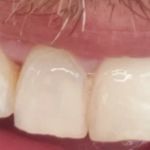Understanding Periodontal Surgery: A Comprehensive Guide to Gum Health and Treatment
- 1. What is Periodontal Surgery?
- 2. When is Periodontal Surgery Needed?
- 3. Types of Periodontal Surgery
- 4. The Procedure of Periodontal Surgery
- 5. Periodontal Surgery Recovery
- 6. Cost of Periodontal Surgery
- 7. Why Choose Dentistry Toothtruth?
1. What is Periodontal Surgery?
Periodontal surgery refers to a range of procedures aimed at treating serious gum disease, also known as periodontal disease, which can lead to tooth loss if left untreated. The surgery targets the soft tissues and bone supporting the teeth, with the goal of restoring and improving gum health.
These surgeries are essential when less invasive treatments like cleaning and scaling fail to address the disease adequately. Whether it's due to deep pockets around teeth, gum recession, or bone loss, periodontal surgery is often a necessary step to preserve oral health.
2. When is Periodontal Surgery Needed?
Periodontal surgery becomes necessary when gum disease has progressed beyond the point where non-surgical treatments can effectively manage it. This may include situations where there is significant damage to the gum tissue or bone, such as:
- Deep pockets between the teeth and gums that are hard to clean.
- Bone loss around the teeth due to severe infection.
- Gum recession affecting the tooth's stability.
If you have persistent gum problems that don’t improve with regular cleaning or medication, it might be time to consider periodontal surgery as part of your treatment plan.
3. Types of Periodontal Surgery
There are several types of periodontal surgeries, each serving a specific purpose in treating gum disease. The most common types include:
- Flap Surgery: In this procedure, the gums are lifted away from the teeth, allowing the dentist to remove tartar and smooth the bone surfaces.
- Bone Grafting: When bone loss occurs, bone grafting is used to replace lost bone tissue, encouraging new bone growth.
- Gum Grafting: In cases of gum recession, a tissue graft may be used to restore lost gum tissue and prevent further recession.
Each of these surgeries targets specific issues caused by gum disease and can significantly improve your oral health when performed correctly.
4. The Procedure of Periodontal Surgery
The procedure for periodontal surgery varies depending on the type of surgery being performed, but generally, the steps include:
- Anesthesia: Local anesthesia is used to numb the treatment area, ensuring you feel no pain during the procedure.
- Incision: In many cases, an incision is made in the gum tissue to access the underlying bone or tooth structure.
- Cleaning and Treatment: The affected area is cleaned, and any necessary repairs or grafts are made to promote healing.
- Closing the Incision: After the procedure, the gum tissue is sutured back into place for healing.
Though the surgery itself may seem intimidating, it is typically well-tolerated with minimal discomfort due to modern anesthetic techniques and advances in periodontal care.
5. Periodontal Surgery Recovery
Recovery from periodontal surgery can take several weeks, and it is important to follow your dentist’s aftercare instructions to ensure the best healing process. Typical recovery steps include:
- Resting and avoiding strenuous activities for a few days.
- Following a soft-food diet to avoid irritation.
- Using prescribed mouth rinses or antibiotics to prevent infection.
Most patients experience mild swelling and discomfort during the first few days, but these symptoms subside as healing progresses. It is crucial to attend follow-up appointments to monitor progress and ensure no complications arise.
6. Cost of Periodontal Surgery
The cost of periodontal surgery can vary based on the type of procedure and your location. On average, treatments can range from a few hundred to several thousand dollars. Insurance may cover part of the cost, especially if the surgery is deemed medically necessary. It’s a good idea to consult with your dental insurance provider and discuss payment options with your dentist to make the procedure more affordable.
7. Why Choose Dentistry Toothtruth?
At Dentistry Toothtruth, we are committed to providing comprehensive periodontal care, ensuring that you receive the best treatment for your gum health. Our experienced dental professionals are equipped with the latest technologies to ensure successful outcomes. If you're interested in learning more about periodontal surgery or want to schedule a consultation, visit us at Dentistry Toothtruth today!







 Maui Whitening Orlando4.0 (32 review)
Maui Whitening Orlando4.0 (32 review) Bloomington Southside Dental Care3.0 (26 review)
Bloomington Southside Dental Care3.0 (26 review) Christiana Dental Center4.0 (650 review)
Christiana Dental Center4.0 (650 review) Carolina Dental Arts - New Bern Ave4.0 (152 review)
Carolina Dental Arts - New Bern Ave4.0 (152 review) Equitas Health Short North Medical Center3.0 (96 review)
Equitas Health Short North Medical Center3.0 (96 review) Prosthodontics of Madison - Kendra Schaefer, DMD & Christine Roenitz, DMD4.0 (25 review)
Prosthodontics of Madison - Kendra Schaefer, DMD & Christine Roenitz, DMD4.0 (25 review) The Importance of Oral Health Education During Pregnancy for a Healthy Pregnancy
The Importance of Oral Health Education During Pregnancy for a Healthy Pregnancy Best Tips for Brushing Your Teeth Properly for Healthy Gums: Essential Techniques for Oral Health
Best Tips for Brushing Your Teeth Properly for Healthy Gums: Essential Techniques for Oral Health Why Skipping Dental Checkups Can Lead to Bigger Oral Health Problems
Why Skipping Dental Checkups Can Lead to Bigger Oral Health Problems Advantages of Porcelain Dental Restorations
Advantages of Porcelain Dental Restorations How Can Diabetes Cause Tooth and Gum Problems? Preventing and Managing Oral Health Issues
How Can Diabetes Cause Tooth and Gum Problems? Preventing and Managing Oral Health Issues Healthy Habits for Promoting Good Oral Health and Hygiene: Tips for a Healthy Smile
Healthy Habits for Promoting Good Oral Health and Hygiene: Tips for a Healthy Smile